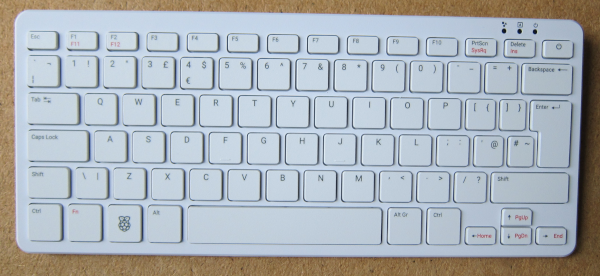Just before Christmas, Raspberry Pi released the first batch of their enhanced integrated keyboard and computer, the Raspberry Pi 500.
They are available on their own or as part of a desktop kit.
I bought the desktop kit from Pimoroni.
The kit is well packed, with sleeved boxes all the way down.Removing the first sleeve reveals the first box. Opening the box reveals another box containing the computer and the HDMI cable.
Under the box containing the computer are the mouse and the power supply. You can just see the Beginners Guide under the HDMI cable. There is also the MicroSD to SD card adapter (be aware the MicroSD card is in the microSD card slot in the computer, just in case you wonder where it is).
The Raspberry Pi 500 box has a sleeve cover.
Removing the sleeve and opening the box reveals the computer.
The underside shows the ventilation grills (the computer has a large passive aluminium heat sink).
The 500 has one USB 2.0 port (the keyboard takes the other one internally), two USB 3.0 ports, the MIcroSD slot (supplied with the card in place), a USB C power socket, two microHDMI sockets, the GPIO port (with a cover), the Ethernet port and the Kensington Lock sockket.
Though the Raspberry Pi 500 has three USB ports, there is always a need for more, or for ones with easier access. The Raspberry Pi USB hub provides four USB 3.0 ports and an optional USB-C power input for high power peripherals.
Though the Raspberry Pi 500 has a standard GPIO port, it is not very convenient to use with standard HATs. However there are special adaptors and cables that can be used to connect to HATs. There is also a special HAT (the Breakout Garden RA400) that has two I2C Breakout Garden sockets and an SPI socket.
It also has a number of other solder points.













